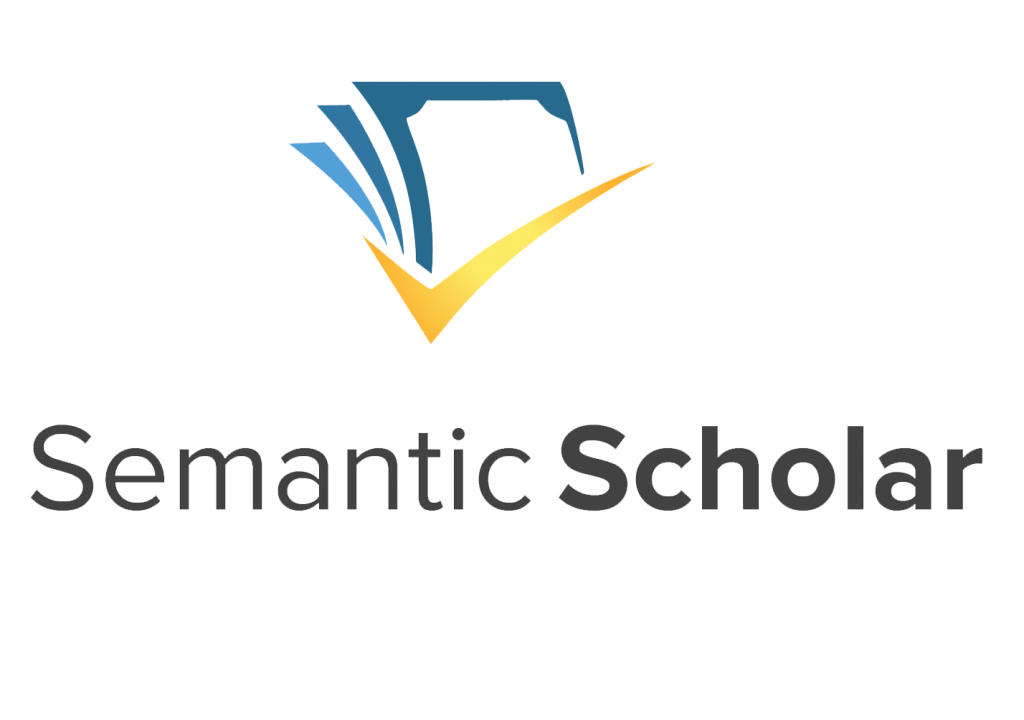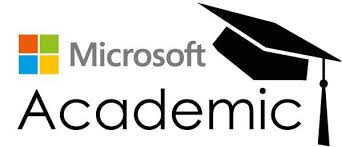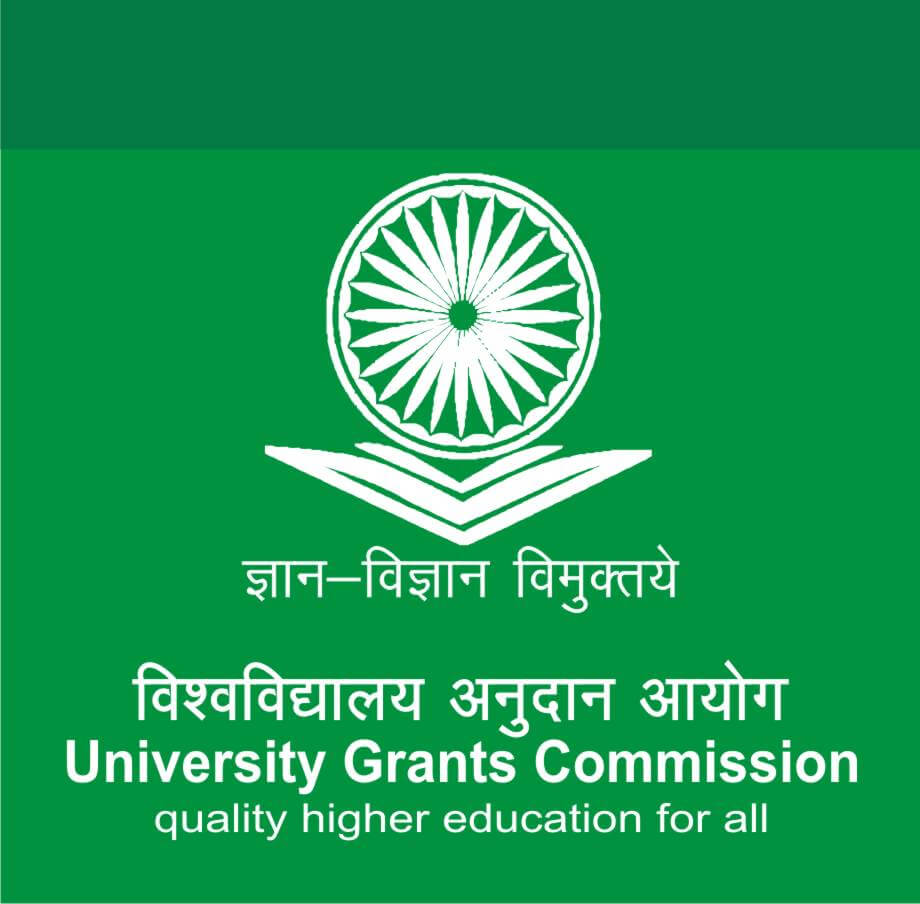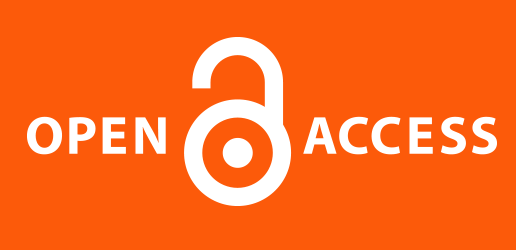INTERNATIONAL JOURNAL OF CREATIVE RESEARCH THOUGHTS - IJCRT (IJCRT.ORG)
International Peer Reviewed & Refereed Journals, Open Access Journal
IJCRT Peer-Reviewed (Refereed) Journal as Per New UGC Rules.
ISSN Approved Journal No: 2320-2882 | Impact factor: 7.97 | ESTD Year: 2013
Call For Paper - Volume 13 | Issue 10 | Month- October 2025
Scholarly open access journals, Peer-reviewed, and Refereed Journals, Impact factor 7.97 (Calculate by google scholar and Semantic Scholar | AI-Powered Research Tool) , Multidisciplinary, Monthly, Indexing in all major database & Metadata, Citation Generator, Digital Object Identifier(CrossRef DOI)
Contact Us Click Here
WhatsApp Contact Click Here
Volume 5 | Issue 3 |
| IJCRT Journal front page | IJCRT Journal Back Page |
Paper Title: STUDY ON THE RELATIONSHIP BETWEEN SOCIO-ECONOMIC STATUS AND ACADEMIC ACHIEVEMENT OF STUDENTS
Author Name(s): DR. MAHANTESH HIREMATH
Published Paper ID: - IJCRT1136016
Register Paper ID - 285721
Publisher Journal Name: IJPUBLICATION, IJCRT
DOI Member ID: 10.6084/m9.doi.one.IJCRT1136016 and DOI :
Author Country : Indian Author, India, 580001 , Dharawad, 580001 , | Research Area: Arts1 All Published Paper URL: http://ijcrt.org/viewfull.php?&p_id=IJCRT1136016 Published Paper PDF: download.php?file=IJCRT1136016 Published Paper PDF: http://www.ijcrt.org/papers/IJCRT1136016.pdf
Your Paper Publication Details:
Title: STUDY ON THE RELATIONSHIP BETWEEN SOCIO-ECONOMIC STATUS AND ACADEMIC ACHIEVEMENT OF STUDENTS
DOI (Digital Object Identifier) :
Pubished in Volume: 5 | Issue: 3 | Year: July 2017
Publisher Name : IJCRT | www.ijcrt.org | ISSN : 2320-2882
Subject Area: Arts1 All
Author type: Indian Author
Pubished in Volume: 5
Issue: 3
Pages: 109-114
Year: July 2017
Downloads: 87
E-ISSN Number: 2320-2882
Abstract
In this present article, the researchers present a study on the relationship between socio-economic status and academic achievement of secondary school students. The researchers used descriptive survey research method for the present study and recruited 85 secondary school students from four secondary schools using simple random sampling technique. The Socio-Economic Status Scale (SESS) developed by Sahu (2012) was used to collect data on the socio-economic status of the students and the previous year marks of the students which were considered as the academic achievement of the students. The researchers analyzed the data by applying Pearson's correlation coefficient and t-test as statistical techniques with the help of IBM SPSS 20.0. The findings of the study showed that there is a positive relationship between socio-economic status and academic achievement of secondary school students.
Licence: creative commons attribution 4.0
License
Keywords
Academic Achievement, socio-economic status, students
License
Paper Title: ROLE AND IMPORTANCE OF EDUCATION FOR ECONOMIC GROWTH IN INDIA
Author Name(s): AKSHAY ASHIT LUGUN
Published Paper ID: - IJCRT1136015
Register Paper ID - 285829
Publisher Journal Name: IJPUBLICATION, IJCRT
DOI Member ID: 10.6084/m9.doi.one.IJCRT1136015 and DOI :
Author Country : Indian Author, India, - , -, - , | Research Area: Science and Technology Published Paper URL: http://ijcrt.org/viewfull.php?&p_id=IJCRT1136015 Published Paper PDF: download.php?file=IJCRT1136015 Published Paper PDF: http://www.ijcrt.org/papers/IJCRT1136015.pdf
Your Paper Publication Details:
Title: ROLE AND IMPORTANCE OF EDUCATION FOR ECONOMIC GROWTH IN INDIA
DOI (Digital Object Identifier) :
Pubished in Volume: 5 | Issue: 3 | Year: July 2017
Publisher Name : IJCRT | www.ijcrt.org | ISSN : 2320-2882
Subject Area: Science and Technology
Author type: Indian Author
Pubished in Volume: 5
Issue: 3
Pages: 99-108
Year: July 2017
Downloads: 92
E-ISSN Number: 2320-2882
Abstract
The Indian education system is now facing many issues that impede its ability to properly contribute to the nation's economic development. Education is a continuous process that cultivates people and society, promoting intellectual, social, and spiritual growth. Originating from the Latin term meaning "to bring up," education is fundamental in shaping humanity's connections with others, the cosmos, and the Creator. In the current situation, education is essential for the enhancement of intellectual capacities and for stimulating the growth and advancement of the Indian economy. The education system must prioritise the development of learners as innovators, scholars, researchers, and educators. In the last century, India has transitioned from using scientific discoveries and industrial methods to enhance output, to now acknowledging education as a crucial driver of productivity development. The post-war period saw a substantial improvement in education, which augmented human capital and led to heightened economic productivity, with two-thirds of U.S. economic development from 1948 to 1973 ascribed to education and innovation. The escalation of international commerce, globalisation, and privatisation has exacerbated economic competitiveness, making education a vital element in improving labour productivity, promoting technological innovation, and assuring sustainable economic development. The recent extensive educational changes are motivated by the pressing need to enhance India's global competitiveness, productivity, and economic prosperity. Robust economic growth in India requires a holistic strategy that amalgamates the significance of education with overarching economic objectives for sustainable development.
Licence: creative commons attribution 4.0
License
Keywords
Education system, Economic growth, India, Labour productivity, Technological advancements, Educational reforms, Economic development.
License
Paper Title: Jan Aandolan Aur Gandhi RanNeeti
Author Name(s): Dr. Shikha Agarwal
Published Paper ID: - IJCRT1136008
Register Paper ID - 284129
Publisher Journal Name: IJPUBLICATION, IJCRT
DOI Member ID: 10.6084/m9.doi.one.IJCRT1136008 and DOI : https://doi.org/10.5281/zenodo.15317012
Author Country : Indian Author, India, - , -, - , | Research Area: Science and Technology Published Paper URL: http://ijcrt.org/viewfull.php?&p_id=IJCRT1136008 Published Paper PDF: download.php?file=IJCRT1136008 Published Paper PDF: http://www.ijcrt.org/papers/IJCRT1136008.pdf
Your Paper Publication Details:
Title: JAN AANDOLAN AUR GANDHI RANNEETI
DOI (Digital Object Identifier) : https://doi.org/10.5281/zenodo.15317012
Pubished in Volume: 5 | Issue: 3 | Year: August 2017
Publisher Name : IJCRT | www.ijcrt.org | ISSN : 2320-2882
Subject Area: Science and Technology
Author type: Indian Author
Pubished in Volume: 5
Issue: 3
Pages: 61-65
Year: August 2017
Downloads: 79
E-ISSN Number: 2320-2882
Abstract
Jan Aandolan Aur Gandhi RanNeeti
Licence: creative commons attribution 4.0
License
Keywords
Jan Aandolan Aur Gandhi RanNeeti
License
Paper Title: REMODELLING CURRICULUM: EMBEDDING SOFT SKILLS IN HIGHER EDUCATION
Author Name(s): Dr, Shantinath A.Baloj
Published Paper ID: - IJCRT1135909
Register Paper ID - 248138
Publisher Journal Name: IJPUBLICATION, IJCRT
DOI Member ID: 10.6084/m9.doi.one.IJCRT1135909 and DOI :
Author Country : Indian Author, India, - , -, - , | Research Area: Science and Technology Published Paper URL: http://ijcrt.org/viewfull.php?&p_id=IJCRT1135909 Published Paper PDF: download.php?file=IJCRT1135909 Published Paper PDF: http://www.ijcrt.org/papers/IJCRT1135909.pdf
Your Paper Publication Details:
Title: REMODELLING CURRICULUM: EMBEDDING SOFT SKILLS IN HIGHER EDUCATION
DOI (Digital Object Identifier) :
Pubished in Volume: 5 | Issue: 3 | Year: August 2017
Publisher Name : IJCRT | www.ijcrt.org | ISSN : 2320-2882
Subject Area: Science and Technology
Author type: Indian Author
Pubished in Volume: 5
Issue: 3
Pages: 346-351
Year: August 2017
Downloads: 270
E-ISSN Number: 2320-2882
Abstract
With a view to face the challenges of globalization which is in line with the era of information technology, a nation is strongly dependent on the intellectual abilities and skills of its citizens. It is widely held that knowledge, skills, and resourcefulness of people are critical to sustain economic development and social activity in a knowledge-driven society. Given the current high-paced growth and dynamic investment climate in India, the demand for knowledge workers with high levels of technical and soft skills is increasing day by day. Human resources with positive attitude towards life and work and germane skills for advanced knowledge economy are becoming important in today's high momentum, globalised society. The development of human capital is thus essential since it enables a nation to envision its mission. Needless to say, quality human capital emerges from a carefully designed and well-planned education system. Thus, institutions of higher learning play a critical role in producing human capital equipped with technical knowledge, life skills and soft meet the demands and expectations of the economy.
Licence: creative commons attribution 4.0
License
Keywords
Soft skills, participatory learning, team-building, peer learning, holistic approach, Stand-alone model, Embedded model
License
Paper Title: Karnataka Habbagala Avalokana
Author Name(s): Dr. Malli Karjuna M
Published Paper ID: - IJCRT1135886
Register Paper ID - 275762
Publisher Journal Name: IJPUBLICATION, IJCRT
DOI Member ID: 10.6084/m9.doi.one.IJCRT1135886 and DOI :
Author Country : Indian Author, India, - , -, - , | Research Area: Science and Technology Published Paper URL: http://ijcrt.org/viewfull.php?&p_id=IJCRT1135886 Published Paper PDF: download.php?file=IJCRT1135886 Published Paper PDF: http://www.ijcrt.org/papers/IJCRT1135886.pdf
Your Paper Publication Details:
Title: KARNATAKA HABBAGALA AVALOKANA
DOI (Digital Object Identifier) :
Pubished in Volume: 5 | Issue: 3 | Year: July 2017
Publisher Name : IJCRT | www.ijcrt.org | ISSN : 2320-2882
Subject Area: Science and Technology
Author type: Indian Author
Pubished in Volume: 5
Issue: 3
Pages: 154-157
Year: July 2017
Downloads: 109
E-ISSN Number: 2320-2882
Abstract
Karnataka Habbagala Avalokana
Licence: creative commons attribution 4.0
License
Keywords
Karnataka Habbagala Avalokana
License
Paper Title: INDIAN DOWRY SYSTEM: AN OVERVIEW
Author Name(s): LAXMI
Published Paper ID: - IJCRT1135885
Register Paper ID - 275680
Publisher Journal Name: IJPUBLICATION, IJCRT
DOI Member ID: 10.6084/m9.doi.one.IJCRT1135885 and DOI :
Author Country : Indian Author, India, 585330 , Humnabad, 585330 , | Research Area: Social Science All Published Paper URL: http://ijcrt.org/viewfull.php?&p_id=IJCRT1135885 Published Paper PDF: download.php?file=IJCRT1135885 Published Paper PDF: http://www.ijcrt.org/papers/IJCRT1135885.pdf
Your Paper Publication Details:
Title: INDIAN DOWRY SYSTEM: AN OVERVIEW
DOI (Digital Object Identifier) :
Pubished in Volume: 5 | Issue: 3 | Year: July 2017
Publisher Name : IJCRT | www.ijcrt.org | ISSN : 2320-2882
Subject Area: Social Science All
Author type: Indian Author
Pubished in Volume: 5
Issue: 3
Pages: 149-153
Year: July 2017
Downloads: 113
E-ISSN Number: 2320-2882
Abstract
ABSTRACT: The Dowry system in India has been running for a long time. It is the money that is given during marriage to the boy or their family, even property can also be included in dowry. The system of dowry started from ancient times like during marriage the money will be given to the groom so that he can take proper care of his bride, it was used to honour both sides of the family. As the time changes dowry still remains in the society but its significance keeps changing with time. Nowadays, the dowry system is becoming like business for some castes. Dowry system is becoming a burden for the bride's family. Many times if demand is not fulfilled for the boy's side then the marriage is abruptly cancelled as a result of this failure. If we see it in our Asian country, then dowry is becoming more important for the groom's side, mainly in countries like India. To end this heinous social practice, the government has made a law to refrain people from taking dowry under the Act of 1961. Whatever money or property given by the bride side they should accept but it never followed. Many places we come to know that because of not doing so on the groom's side the girls are harmed in such a way that sometimes even it leads to death. Some people even think dowry is like crime, it's illegal and they never ask anything from the bride's family. In India, everyone speaks and progresses for women's rights and says 'Beti Bachao Beti Padhao' but a girl even after achieving everything in her life; where she starts taking care of her family but even then she can't escape the shackles of dowry.
Licence: creative commons attribution 4.0
License
Keywords
Key Words: Gender Discrimination, Affecting Career of Women, Suicide, dowry deaths..Etc
License
Paper Title: Bhattarakadevashakra virchit Pratapakavyasya Trivinsatisargasya Sampadanamadhyanamcha
Author Name(s): Dr. Shashi Kumar sharma
Published Paper ID: - IJCRT1135875
Register Paper ID - 275218
Publisher Journal Name: IJPUBLICATION, IJCRT
DOI Member ID: 10.6084/m9.doi.one.IJCRT1135875 and DOI :
Author Country : Indian Author, India, - , -, - , | Research Area: Science and Technology Published Paper URL: http://ijcrt.org/viewfull.php?&p_id=IJCRT1135875 Published Paper PDF: download.php?file=IJCRT1135875 Published Paper PDF: http://www.ijcrt.org/papers/IJCRT1135875.pdf
Your Paper Publication Details:
Title: BHATTARAKADEVASHAKRA VIRCHIT PRATAPAKAVYASYA TRIVINSATISARGASYA SAMPADANAMADHYANAMCHA
DOI (Digital Object Identifier) :
Pubished in Volume: 5 | Issue: 3 | Year: July 2017
Publisher Name : IJCRT | www.ijcrt.org | ISSN : 2320-2882
Subject Area: Science and Technology
Author type: Indian Author
Pubished in Volume: 5
Issue: 3
Pages: 99-104
Year: July 2017
Downloads: 116
E-ISSN Number: 2320-2882
Abstract
Bhattarakadevashakra virchit Pratapakavyasya Trivinsatisargasya Sampadanamadhyanamcha
Licence: creative commons attribution 4.0
License
Keywords
Bhattarakadevashakra virchit Pratapakavyasya Trivinsatisargasya Sampadanamadhyanamcha
License
Paper Title: Study of Serial channels with feedback connected with Non-Serial Queuing Processes with Reneging and Balking with finite waiting space
Author Name(s): Satyabir Singh
Published Paper ID: - IJCRT1135869
Register Paper ID - 274557
Publisher Journal Name: IJPUBLICATION, IJCRT
DOI Member ID: 10.6084/m9.doi.one.IJCRT1135869 and DOI : http://doi.one/10.1729/Journal.42869
Author Country : Indian Author, India, - , -, - , | Research Area: Science and Technology Published Paper URL: http://ijcrt.org/viewfull.php?&p_id=IJCRT1135869 Published Paper PDF: download.php?file=IJCRT1135869 Published Paper PDF: http://www.ijcrt.org/papers/IJCRT1135869.pdf
Your Paper Publication Details:
Title: STUDY OF SERIAL CHANNELS WITH FEEDBACK CONNECTED WITH NON-SERIAL QUEUING PROCESSES WITH RENEGING AND BALKING WITH FINITE WAITING SPACE
DOI (Digital Object Identifier) : http://doi.one/10.1729/Journal.42869
Pubished in Volume: 5 | Issue: 3 | Year: September 2017
Publisher Name : IJCRT | www.ijcrt.org | ISSN : 2320-2882
Subject Area: Science and Technology
Author type: Indian Author
Pubished in Volume: 5
Issue: 3
Pages: 56-60
Year: September 2017
Downloads: 123
E-ISSN Number: 2320-2882
Abstract
O'Brien (1954), Jackson (1954) and Hunt (1955) studied the problems of serial queues in the steady state with Poisson assumptions. In these studies, it is assumed that the unit must go through each service channel without leaving the system. Barrer (1955) obtained the steady - state solution of a single channel queuing model having Poisson input, exponential holding time, random selection where impatient customers leave the service facility after a wait of certain time. Finch (1959) studied simple queues with customers at random for service at a number of service stations in series where the arrival from outside was considered at the initial stage. Feedback is permitted either from the terminal server or from each server of the series to the queue waiting for service at that stage by imposing an upper limit on the number of customers in the system at any time. Singh(1984) studied the problem of serial queues introducing the concept of reneging. Singh and Umed (1994) worked on the network of queuing processes with impatient customers. Punam (2011) found the steady-state solution of serial queuing processes where feedback is not permitted. In our present work, the steady-state solutions are obtained for serial channels with feedback connected with non-serial queuing processes with reneging and balking and non-serial queuing processes with reneging and balking in which (i) M service channels in series are linked with N non-serial channels having reneging and balking. (ii) Feedback is permitted in M serial service channel from any channel to its pervious channel. (iii) A customer may join any channel from outside and leave the system at any stage after getting service. (iv) Poisson arrivals and exponential service times are followed. (v) The queue disciple is random selection for service. (vi) Waiting space is finite.
Licence: creative commons attribution 4.0
License
Keywords
Steady-State, difference-differential, waiting space, random selection, Poisson arrivals, exponential service, feedback, reneging and balking.
License
Paper Title: "Rapid population growth in Bangalore", Causes and Solutions
Author Name(s): Prof. UMME NASEEBA
Published Paper ID: - IJCRT1135807
Register Paper ID - 271599
Publisher Journal Name: IJPUBLICATION, IJCRT
DOI Member ID: 10.6084/m9.doi.one.IJCRT1135807 and DOI :
Author Country : Indian Author, India, 562159 , Ramanagara, 562159 , | Research Area: Arts1 All Published Paper URL: http://ijcrt.org/viewfull.php?&p_id=IJCRT1135807 Published Paper PDF: download.php?file=IJCRT1135807 Published Paper PDF: http://www.ijcrt.org/papers/IJCRT1135807.pdf
Your Paper Publication Details:
Title: "RAPID POPULATION GROWTH IN BANGALORE", CAUSES AND SOLUTIONS
DOI (Digital Object Identifier) :
Pubished in Volume: 5 | Issue: 3 | Year: August 2017
Publisher Name : IJCRT | www.ijcrt.org | ISSN : 2320-2882
Subject Area: Arts1 All
Author type: Indian Author
Pubished in Volume: 5
Issue: 3
Pages: 632-641
Year: August 2017
Downloads: 123
E-ISSN Number: 2320-2882
Abstract
Abstract: Bangalore, a bustling metropolis in India, has witnessed rapid population growth in recent decades, fueled by urbanization and economic opportunities. This surge has strained infrastructure, housing, and public services, leading to various socio-economic and environmental challenges. This abstract explores the causes and proposes potential solutions to mitigate these issues. The primary causes of Bangalore's population explosion include rural- urban migration driven by job prospects in IT and other sectors, coupled with a high fertility rate among existing residents. Such growth has resulted in overcrowded neighborhoods, inadequate sanitation, and increased pollution levels. To address these challenges, sustainable urban planning initiatives are crucial. These include expanding public transportation networks, promoting affordable housing projects, and enhancing healthcare and educational facilities. Furthermore, investing in green spaces and 2 | Page implementing effective waste management strategies are essential to improve the city's livability and environmental sustainability. This abstract concludes by emphasizing the need for integrated policies that balance economic growth with environmental conservation and social equity. By adopting comprehensive strategies, Bangalore can manage its rapid population growth more effectively and create a more livable urban environment for its residents. Bangalore, a thriving metropolis in India, has undergone unprecedented urbanization and economic growth in recent decades, propelling it into one of Asia's fastest-growing cities. This transformation has been accompanied by a significant surge in population, driven primarily by opportunities in the IT sector and other industries. As migrants flock to the city in search of employment and better livelihoods, Bangalore's demographic landscape has expanded rapidly, posing substantial challenges to its infrastructure, housing availability, and public services. The causes of Bangalore's population explosion are multifaceted. Urbanization has played a pivotal role, attracting a diverse population from rural areas and other states, drawn by the promise of employment opportunities and urban amenities. Concurrently, the city's existing residents contribute to its demographic growth through high fertility rates. These factors combined have resulted in extensive urban sprawl, 3 | Page overcrowded neighborhoods, strained transportation networks, and a burgeoning demand for housing, particularly affordable options. The consequences of this rapid growth are profound and wide-ranging. Infrastructure in Bangalore is under immense pressure, with inadequate road networks, traffic congestion, and insufficient public transportation systems hindering mobility and economic productivity. Housing shortages have led to the proliferation of informal settlements and slums, exacerbating social inequalities and complicating urban planning efforts. Moreover, public services such as healthcare, education, and sanitation struggle to meet the needs of an expanding population, impacting their accessibility and quality. Environmental sustainability is another critical concern amid Bangalore's rapid urban expansion. The city's rapid development has contributed to environmental degradation, including air and water pollution, loss of green spaces, and challenges in waste management. These environmental pressures not only threaten public health but also strain natural resources and exacerbate climate vulnerabilities. In response to these challenges, Bangalore has embarked on various initiatives aimed at managing its population growth sustainably. Sustainable urban planning strategies are at the forefront, emphasizing compact development, mixed land use, and transit-oriented infrastructure to optimize urban space and improve connectivity. Efforts 4 | Page to promote affordable housing projects and upgrade informal settlements aim to enhance living conditions and reduce socio-economic disparities. Investments in healthcare, education, and sanitation infrastructure are pivotal to improving public service delivery and ensuring equitable access for all residents. Hypothesis: The hypothesis of this study posits that rapid population growth in Bangalore is primarily driven by urbanization and economic opportunities, particularly in the IT sector, leading to significant strains on infrastructure, housing, and public services. This demographic expansion exacerbates socio-economic disparities and environmental challenges, necessitating comprehensive urban planning and sustainable development strategies to manage growth effectively while enhancing quality of life for residents. Through targeted interventions and policy measures, Bangalore can mitigate the negative impacts of population growth, achieve balanced urban development, and foster a resilient and inclusive city environment for its diverse population.
Licence: creative commons attribution 4.0
License
Keywords
Key Words: ? Bangalore ? Population growth ? Urbanization ? Infrastructure ? Housing ? Public services ? Socio-economic challenges ? Environmental impact ? Sustainable urban planning ? Public transportation ? Affordable housing ? Healthcare facilities ? Educational facilities ? Green spaces ? Waste management ? Livability
License
Paper Title: Tribal Laws and Welfare Concepts in India-Historical Perspectives
Author Name(s): SHIVANNA NAIK
Published Paper ID: - IJCRT1135787
Register Paper ID - 270968
Publisher Journal Name: IJPUBLICATION, IJCRT
DOI Member ID: 10.6084/m9.doi.one.IJCRT1135787 and DOI :
Author Country : Indian Author, India, 573202 , HASSAN, 573202 , | Research Area: Arts1 All Published Paper URL: http://ijcrt.org/viewfull.php?&p_id=IJCRT1135787 Published Paper PDF: download.php?file=IJCRT1135787 Published Paper PDF: http://www.ijcrt.org/papers/IJCRT1135787.pdf
Your Paper Publication Details:
Title: TRIBAL LAWS AND WELFARE CONCEPTS IN INDIA-HISTORICAL PERSPECTIVES
DOI (Digital Object Identifier) :
Pubished in Volume: 5 | Issue: 3 | Year: August 2017
Publisher Name : IJCRT | www.ijcrt.org | ISSN : 2320-2882
Subject Area: Arts1 All
Author type: Indian Author
Pubished in Volume: 5
Issue: 3
Pages: 508-515
Year: August 2017
Downloads: 144
E-ISSN Number: 2320-2882
Abstract
Abstract "The Adivasis are the original inhabitants whose materials position is perhaps no better than that of Harijans and who have long been victims of neglect on the part of the so-called high classes. They are like the indigenous medicine, of the soil, and their roots lie deep there" Mahatma Gandhi 1 India has the largest concentration of tribal people in world, next to Africa. Tribal villages are located in remote and inaccessible forest regions The tribes are said to be the original inhabitants of India. They are called different names. Adivasis, tribes, primitive tribal groups, indigenous people, Scheduled tribes, aboriginals etc. In addition, there are hundreds of de- notified tribes, nomadic tribes, semi-nomadic tribes and other tribes that have not been included in the Scheduled list. In tribal dominated regions, and the poor socio-economic conditions of the tribes were attributed to their geographical and social isolation. The schedule caste (SCs) and scheduled tribes (STs) are two groups of historically disadvantaged people recognized in the constitution of India. The tribals are deprived of their right in each and every sphere of society. In recent years the resources like land, forest and water of the scheduled has mounted and they have been displaced. The key issue today is the protection of tribal people against exploitation, guaranteeing their rights in their resources so that they are able to develop according to their genius and aspiration. A number of domestic as well as international instruments are constructed to uplift these backward classes of people. The constitution made provisions for socio economic development of tribals.
Licence: creative commons attribution 4.0
License
Keywords
Keywords: Scheduled Tribes, Adivasis, nomadic, constitution, tribal area, privileges, vulnerable community, rehabilitation legislations, land laws, Reservation policies, and tribal rights, Forest Dwellers, Empowerment, Policies,
License
October 2025
Volume 13 | Issue 10
Last Date :
31-Oct-2025
Submit Manuscript Online Impact Factor: 7.97 Review Results : Within 02-03 Days Paper Publication : Within 02-03 Days

ISSN: 2320-2882 Impact Factor: 7.97 and ISSN APPROVED Journal Starting Year (ESTD) : 2013

ISSN: 2320-2882 Impact Factor: 7.97 and ISSN APPROVED Journal Starting Year (ESTD) : 2013

CONFERENCE PROPOSAL CONFERENCE PROCEEDINGS







































































